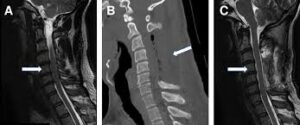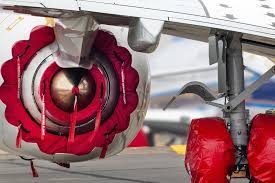This is a story about the unexpected – an unremarkable story on the face of it, but like many stories of its ilk, instructive.
In August, as I have recounted several times in my blog, I was in Chile and in particular Valparaiso. As I was hobbling down a flight of stairs and across a doorway in the restaurant, my hand caught on something sharp. Whether metal or wood, it created a spectacular gash over my fifth metatarsal right hand. It as not particularly long, but it bled. My canes clattered to the floor. As I had nothing immediately at hand except paper serviettes to staunch the bleeding, and rudimentary Spanish to say “Ayuda”, it continued to bleed profusely. It took some time for my companion, who was sitting by the window in this upstairs-downstairs configuration, to come and put order into stopping the bleeding, by pressure.
Eventually Chilean band-aids were produced and these reduced the bleeding to an ooze. The wound was not stitched, but there was a bit of debridement and the edges of the wound were roughly opposed – without seeking outside medical help. I thought that was one reason it took a long time to apparently heal, but the skin remained pink as the scar tissue started to form.
One day about a month after I had returned home a lump appeared at the site of the scar. It grew relatively quickly, but the skin did not ulcerate. I went to my long time plastic surgeon in Melbourne. I thought there must have been some retained fragment – a foreign body that had been missed. The surgeon who has operated on me on a number of occasions said nothing except after a little hesitation, that he would take it off immediately.

I was surprised by the length of the incision and its depth; I should not have been so surprised when the pathology came back – squamous cell carcinoma. Sometimes in wound tissue an aggressive skin cancer can erupt. That had occurred in my case – Marjolin’s is the eponymous name for it – normally these cancers appear as an ulcer, and this would probably have occurred in a few days if it had not been removed.
That was a month or so ago, but now the area has healed and the scar from the incision is barely visible.
A very good astute surgeon, now onto my next experience…
The Surgeon Never Replied
Below is a letter I wrote to a surgeon just prior to a proposed operation three years ago. I have still not had the operations, and although I have a few mild symptoms I have not had to endure the morbidity or my family the funeral costs which could easily have resulted from operative intervention. I am writing this blog to provide an informed consumer perspective on my doubts about spinal surgery.
The other problem with surgery, especially with severe osteoarthritis in the shoulder joints, is that when you are being moved about during cervical surgery the anaesthesia will mask any incidental damage being done in the shoulder. One does not feel the pain of tearing a ligament or muscles or the rotator cuff of the shoulder joint until one comes out of the anaesthesia, and suddenly there is another centre of pain. In the aftermath of proposed surgery, pain relief for me is always going to be tricky because of my sensitivity to opioids. That does not matter to the orthopaedic surgeon – the surgery itself is the centrepiece, not the subsequent morbidity nor the rehabilitation. After all, I was facing three major orthopaedic operations in short order – nearing the end of my eighth decade.
The following is my letter to the surgeon appropriately de-identified sent in the days before the operation.
I thought I would explain the reasons for deferring my operation. I am sure you respect that the choice I have made has not been undertaken without much deep consideration of balancing the risks and benefits. My response was largely generated from our last consultation and your subsequent letter to Dr A.
I note you made a comment that if I stressed my spine that there was a possibility of worsening the condition but I recently spent nine days in Malawi on a number of extremely rough terrains in a four-wheel drive without any apparent change.
Currently I have very mild numbness in my little and ring fingers intermittently in the morning on waking – not every day!

If one reads my latest MRI report it demonstrates that I have significant pathology in my cervical spine, yet I am virtually symptom free. You list the risks associated with the procedure without setting out the probability of any them occurring. Hence I take the paragraph in your letter to Dr A to mean that they are considerable risks. I thought it preferable to have the MRI at JHospital well before the operation rather than the day before – and there is no doubt that JHospital runs a very professional operation. However, so does the Diagnostic Imaging Department at IH, with which there appears to have been an unfortunate failure in communication (with yourself. I am sure you did not meant to criticise the IH nor the fact that at that time it was more convenient for me to have my imaging undertaken there.
In addition you intend to take iliac crest bone which, as you rightly point out, is better than cadaveric bone for the putative operation on my cervical spine
However I have chronic polymyalgia rheumatica, the aetiology of which condition remains obscure, but there is one observation I would make which is that any shift in the dose of cortisone (currently 4 mgs a day) has a far more marked clinical effect than would be expected – manifested as stiffness and muscle weakness. There is no mention of the possible impact of operative trauma on such a condition, but you would have more information than I do. Therefore, that is one matter that needs to be resolved. The other of course is the effect that the cortisone has had on my bone given that I have been on the drug for three years, despite taking Vitamin D regularly.
I am nearly 77 years old, which is a factor, and the fact is that my cervical spine has significant pathology. The question that is raised is whether there is any guarantee that intervention would not have a cascading effect requiring more operative intervention for diminishing returns.
In relation to my lumbar spine, I do have symptomatology of mild spinal claudication as you have noted as 5/10, but as one senior physician said to me the other day, the major problem is my right knee – and knowing the success of such an operation would it not be preferable to do any operative intervention starting with the knee?
The question then arises of whether the operative schedule should be in reverse, and would a laminectomy guarantee relief of my symptomatology – particularly my ataxia and loss of proprioception? Your letter would seem to suggest otherwise. Is the fact that even if I had a lumbar spine operation I would not be helped? What are the odds of improvement given my age and lumbar pathology.
I walk with two sticks for social reasons not because I need them invariably. For instance, I challenged myself the other day to walk without sticks but accompanied for three blocks to the coffee shop. There was some pain in my knee, minimal pain in my back and no symptomatology referable to my neck. The pain did not stop me at any stage, there and back.
I continue to do hydrotherapy twice a week and find it very helpful and, so as to clarify your comments in the letter concerning “Panadol Osteo” dosage, I am taking 4 tablets of Panadol (625mg) a day in divided doses and not six as previously. Do you think that a significant observation?
There are a number of other matters in your letter to Dr A, which could be better put. The comment concerning my heavy smoking history is totally ambiguous given that I have not smoked for 36 years, and it was taken not from any direct interrogation but lifted from my “confidential note”. The fact that I produced those notes to inform you so that it saved time and helped you to take a comprehensive history. I am sorry to have to make that point, but in providing such information it should be attributed and not just “noted”.
A copy of the letter was sent to Dr P who retired at the end of June and my doctor is now Dr Q locally. Given that the letter was sent to Dr A, who made the initial referral I am at a loss to understand how that occurred. The copy to Dr P has been archived at NHospital with certain agreed caveats. I believe that any copies of correspondence should not only be sent to Dr Q but also to Dr R, who has been the rheumatologist responsible for my treatment for PMR since 2013, when Dr A referred me to him, Dr A having made the initial diagnosis.
You have not referenced my severe shoulder osteoarthritis, which would be a consideration in any cervical spine surgery? (Here a confidential matter relating to another person has been excised from my letter.)
There are there other matters that puzzle me and that, given all the potential complications set out, I understand you will be away the week after the proposed date of surgery – and if that is true who would undertake my post-operative care, should any of the dire consequences set out in your letter occur.
The second source of my puzzlement is an initial comment you made that you would be prepared to operate on my back four days after my cervical spine operation. Does that still hold true?
The third matter is your comment that “ agreed with your need to alter the plan on the day before”. I must have misheard but I do not remember agreeing to a change in plan –especially as it would appear that a substantial part of my cervical spine is affected and yet I am virtually asymptomatic. My cervical symptomatology is better than it has ever been given the problems I had with it 20 years ago, and which were relieved by some excellent physiotherapy.
Those cervical symptoms were resolved a long time before I first presented to Dr A. It is certainly not a decision I would take the day before the operation, given the seriousness of the complications you have listed. Hence this was my reason for undertaking the imaging a substantial time before the proposed operation.
The underlying question is would it not be better to reverse the operative schedule on the basis of relief of symptomatology and enabling me to walk pain free, with a reasonable gait and with an improved ability to negotiate stairs, reverting to what I could do in early 2013 before the onset of the PMR, which seems to have acted as the tipping point for all this?
As you foreshadowed in your letter you have awaited my further advice –and my basic response is the question above couched against the previous consultation, but not with the benefit of you reviewing the MRI and spinal X-rays
I asked for a number of second opinions. The average elderly person who is suffering from degenerative disease does not have that option because information in the health sector is so asymmetric.
To me the non-response to the letter reflects on the person. Here there is an arrogance characteristic of some of the medical profession. They do not see it, especially when they have only patient contact and are acting like a high paid tradesman, who comes in does his job, gets paid and moves on. From my experience very few tradesmen ever come back to view their work. Unfortunately, I was brought up to be a doctor and now as a consumer my perspective has only shifted to the other side of the desk. There should be debate, including this doctor who has remained silent for over three years.
Boeing Sub-Max
In a investigative piece on Boeing at the time that it was amalgamating with McDonnell Douglas to monopolise the American plane construction in 1997, Boeing’s warts were well and truly revealed. McDonnell Douglas had some very good planes, but inter alia fell over because of its failure to build economic wide-bodied airliners, despite in 1995 receiving US$334m in rebates from kindly Uncle Sam.
Meanwhile the Pentagon was awarding Boeing US$1bn for “restructuring costs” and so eager was Export-Import Bank to ease any problems that Boeing might have, was renamed by some in Congress as the “Bank of Boeing”.
If you want to blame the Republicans for allowing this monopoly to occur, well that’s just not true. Increasingly when the truth of this has emerged, since there in the centre of these appalling decision, smoking a cigar in his Oval office was Mr Teflon – Bill Clinton.
He agreed with the advice that the Boeing position was legal because of the pressure it faced from Airbus. As the1997 correspondent said: “Using this logic all the US automakers could merge because the ‘Big One’ would still face foreign competition. Too bad the Detroit lobbyists can’t figure out a way to hide price hikes in the airline tickets and Pentagon procurements.”
Now Boeing is being confronted with a major problem – its latest airliners appear to be duds – and dangerous duds at that.
I have flown on most types of Boeing: 707 through to 747 internationally, 727 and 767 domestically, and even the 717 and 757 although not as commonly as the workhorse, the 737. They have all been good aircraft, although the Qantas 747s are becoming creaky and by preference I try to avoid them.
A former retired Boeing engineer and policy analyst has been reported recently as saying: “(There has been) a shift in the culture at Boeing from one which strove for engineering excellence to one focused on cost cutting. This deliberate strategy from the very top of the company led to massive, ill-thought-out outsourcing and the discarding of engineering talent as work was moved out of the Puget Sound region…(and in turn) has led to major failures on Boeing’s latest two major airplane development programs — first the heavily outsourced 787 Dreamliner and then the minimally upgraded 737 MAX. Both planes had to be grounded over safety issues.”
This failure has left companies in the supply chain in tatters. Fiddling and tweaking has not worked. Other airlines are running out of patience and are ordering planes from Airbus. As the airline fleets age then attention turns to maintenance; and if cost cutting takes over there as at Boeing, then air travel becomes not just an atmospheric pollutant but also a health hazard.
As has also been reported locally in the Seattle media “Boeing hopes for its first good-news event: the long-delayed first flight of the new 777X, with its massive composite wings. In late January, Boeing’s new leadership will reveal the latest tally of the cost of the MAX grounding, updating the $9.2 billion estimate through October. The rest of the year is likely to be a long slog, getting the MAX program restarted and slowly ramping back up again. No one can yet foresee the long-term impact.”

It sounds forlorn, since many of the mistakes Boeing has made in the 20 years interval have been glossed over by Government not holding them to account and the accompanying high profitability of the 737 until the MAX version came on line.
There have been failures such as not exploiting the 717, which, as one our own Alan’s choices, was particularly shrewd. There is now an increasing requirement for jet airliners with 100-150 seat capacity to run on regional services. The 717 fulfilled that need, but it was given the cold shoulder at Boeing because it was essentially a McDonnell Douglas enterprise and Boeing stopped making them. Only Delta, Hawaiian and Qantas have the plane in any numbers, and they are not selling them. Now through its Bombadier subsidiary, Airbus is filling the need. In the end the 717 will suffer as we all do – it will need spare parts that are no longer there.
However, all is not lost on the bottom line. There are the cost-plus projects where the Defence force chiefs inflate their budgets with expensive projects. Because they are seen as symbols of military might, it is interesting to reflect on the giant transport plane, built by Boeing, the C-17. With a budget of between USD200-300m a year for each one, one official labeled it the Golden Turkey because of its cost and its vulnerability to being blown apart by $22 mortar shell. Perhaps it has been made less vulnerable, especially after one crashed into an Alaskan forest in 2010.
Nevertheless more recently than that, someone who had experienced the joys of travelling in a C-17 said despite all the hype of being long range and being able to be refuelled in midair, it was more like a “stopping all stations conveyance” between the United States and Afghanistan, even including a stop for repairs.
Despite all the rending of garments, the Defence establishment continues to pour money into Boeing. In 2018, Boeing won contracts to build a new pilot training jet for the Air Force, an in-flight refueling drone for the Navy, and a fleet of the Airforce security helicopters.
As reported, Boeing’s “Defence revenues” had fallen by more than one-third over the timeline of a decade: from USD32.1 billion in 2007 to USD21.1 billion in 2017. But, President Donald Trump’s higher defence spending and three new military contracts put Boeing back in the game in 2018.
Still, to put all of the boondoggle in perspective, the Boeing commercial division in 2018 before the Supermax crisis billed USD60bn by airlines around the World.
Cap in hand to the Government you would think can go only so far, but Boeing has shown it has a capacious chapeau.
Mouse whisper
Just a message for the Nimbin anti-vaxxers …
Your child about two years old gets chicken pox; has a high fever – starts fitting – you prescribe one of those herbal remedies that incidentally has aspirin hidden away in it. Child severely incapacitated mentally – or dies.
Remember the name Reye, who first described the mixed brain and liver symptoms and signs as a syndrome in small kids.
Chicken pox plus aspirin; vaccinate against chicken pox. Reyes Syndrome no longer. QED.
Ralph Reye incidentally was an Australian pathologist – normally they are the doctors who deal with the dead.
Like polio, Reye’s syndrome was nearly eliminated until your mob came along.

